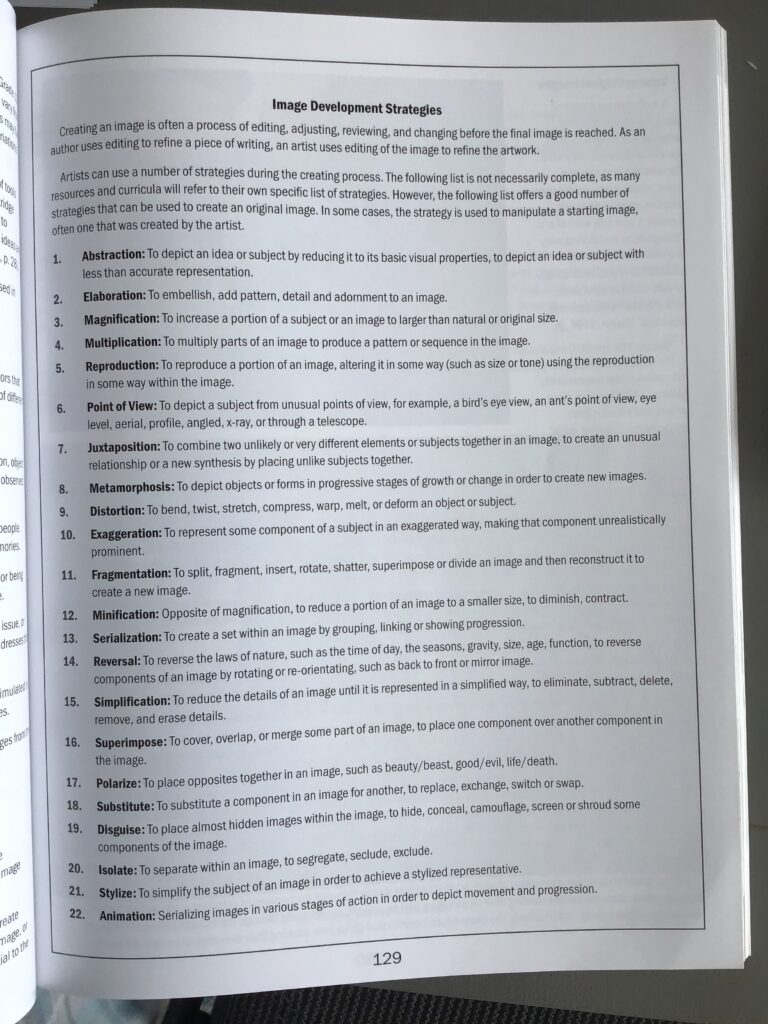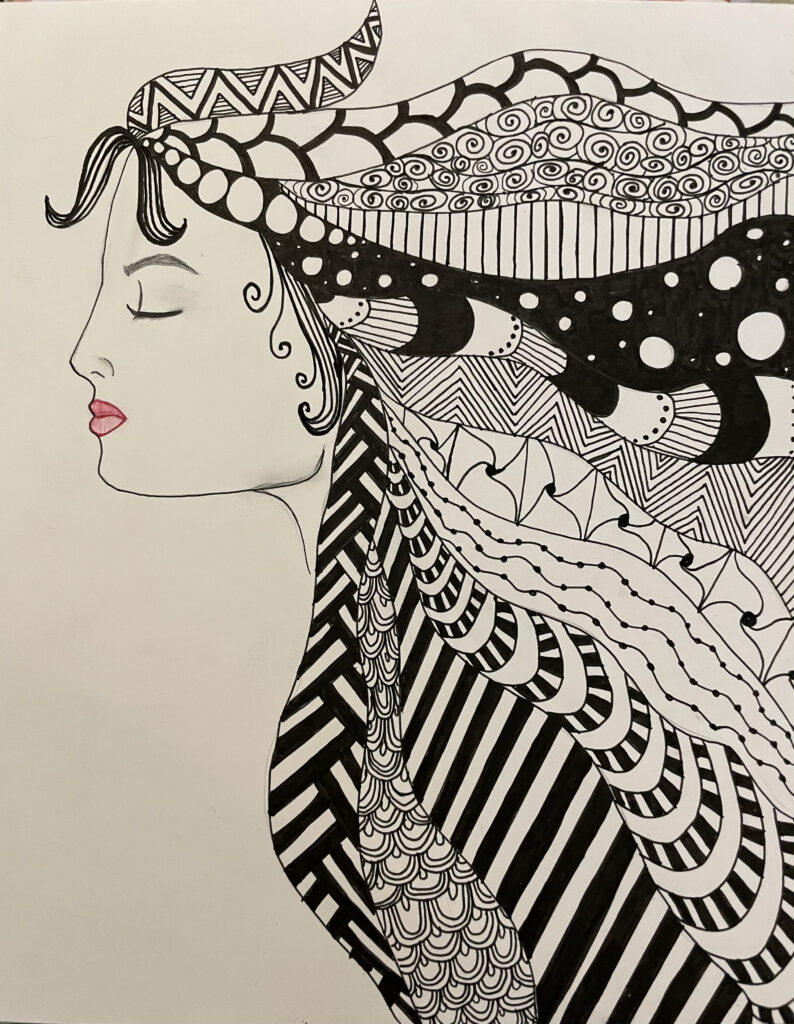
Grade 3:
- Reversal
- Elaboration
- Simplification
Grade 4:
- Multiplication
- Magnification
Grade 5:
- Point of View
- Abstraction
- Exaggeration
- Distortion
Grade 6
- Serialization
- Substitution
Artworks:
Reversal: The aim of this activity was to get us more comfortable with image development strategies.

Instructions: cut a sheet of watercolor paper in half and fold it in half. Using one side, draw a simple pattern in black oil pastel, and fold together. Press firmly on the paper, maybe using the back of a spoon, until you have transferred the black pastel onto the other side. Clean up the drawing, and then color one side in warm colors and the other side in cool colors, or use complementary colors to get a fun effect.
Materials:
- watercolor paper
- Black oil pastel
- Oil pastels
- spoon
- scissors.
Elaboration: This zentangle activity goal was to get us more comfortable using the Image development strategy elaboration.

Instructions: Start by drawing simple shapes, then using a black sharpie or pencil crayons to draw intricate designs and patterns within the simple shapes. Using multiple different patters allows the art to pop and really create an illusion of the art work.
Materials:
- watercolor paper
- Black sharpie, 2 widths
- pencil crayons
- pencil
- protractor (for circles)
Artist: Picasso
CO/Screen%20Shot%202020-10-10%20at%206.10.31%20PM.jpeg?_&d2lSessionVal=Xi7KxWrwqxQKLLyON8YXy8RxN)
This might be Picasso’s most famous artwork and his most powerful political piece. This artwork represents the Nazi’s detrimental bombing practice on the town of Guernica during the Spanish Civil War. This piece displays emotional heartache and tragity from the suffering of innovent citizens. Picasso’s piece gained monumental status, and is used as a reminder of the damaging effects of war, and is used as a symbol of peace.